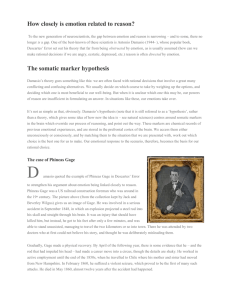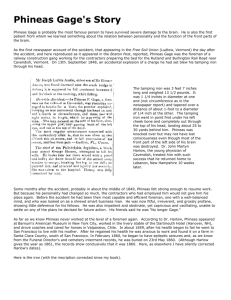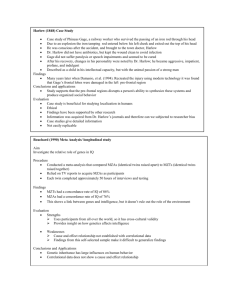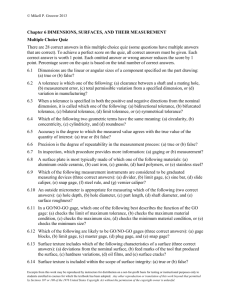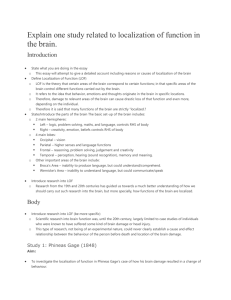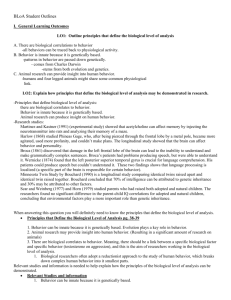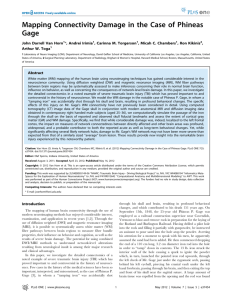The Tragic Tale of Phineas Gage: Neuroscience`s First Patient
advertisement
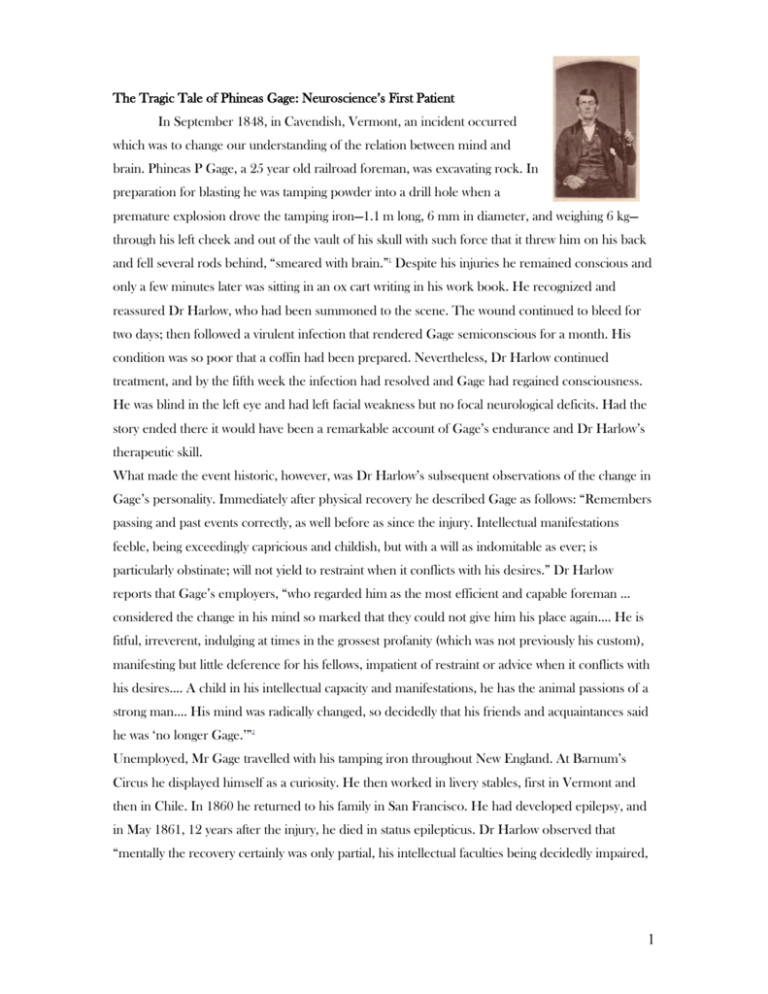
The Tragic Tale of Phineas Gage: Neuroscience’s First Patient In September 1848, in Cavendish, Vermont, an incident occurred which was to change our understanding of the relation between mind and brain. Phineas P Gage, a 25 year old railroad foreman, was excavating rock. In preparation for blasting he was tamping powder into a drill hole when a premature explosion drove the tamping iron—1.1 m long, 6 mm in diameter, and weighing 6 kg— through his left cheek and out of the vault of his skull with such force that it threw him on his back and fell several rods behind, “smeared with brain.”1 Despite his injuries he remained conscious and only a few minutes later was sitting in an ox cart writing in his work book. He recognized and reassured Dr Harlow, who had been summoned to the scene. The wound continued to bleed for two days; then followed a virulent infection that rendered Gage semiconscious for a month. His condition was so poor that a coffin had been prepared. Nevertheless, Dr Harlow continued treatment, and by the fifth week the infection had resolved and Gage had regained consciousness. He was blind in the left eye and had left facial weakness but no focal neurological deficits. Had the story ended there it would have been a remarkable account of Gage’s endurance and Dr Harlow’s therapeutic skill. What made the event historic, however, was Dr Harlow’s subsequent observations of the change in Gage’s personality. Immediately after physical recovery he described Gage as follows: “Remembers passing and past events correctly, as well before as since the injury. Intellectual manifestations feeble, being exceedingly capricious and childish, but with a will as indomitable as ever; is particularly obstinate; will not yield to restraint when it conflicts with his desires.” Dr Harlow reports that Gage’s employers, “who regarded him as the most efficient and capable foreman ... considered the change in his mind so marked that they could not give him his place again.... He is fitful, irreverent, indulging at times in the grossest profanity (which was not previously his custom), manifesting but little deference for his fellows, impatient of restraint or advice when it conflicts with his desires.... A child in his intellectual capacity and manifestations, he has the animal passions of a strong man.... His mind was radically changed, so decidedly that his friends and acquaintances said he was ‘no longer Gage.’”2 Unemployed, Mr Gage travelled with his tamping iron throughout New England. At Barnum’s Circus he displayed himself as a curiosity. He then worked in livery stables, first in Vermont and then in Chile. In 1860 he returned to his family in San Francisco. He had developed epilepsy, and in May 1861, 12 years after the injury, he died in status epilepticus. Dr Harlow observed that “mentally the recovery certainly was only partial, his intellectual faculties being decidedly impaired, 1 but not totally lost; nothing like dementia, but they were enfeebled in their manifestations, his mental operations being perfect in kind, but not in degrees or quantity.”2 Against a background of phrenology and Brocas’s writings on aphemia (1861) there was considerable resistance to Dr Harlow’s hypothesis. On the basis of experimental physiology he concluded, “There are certain regions in the cortex to which definite functions can be assigned; and that the phenomena of cortical lesions will vary according to their seat and also according to their character.”3 On removing prefontal lobes in monkeys he had found that “removal or destruction by the cautery of the antero-frontal lobes is not followed by any definite physiological results.... And yet, notwithstanding this apparent absence of physiological symptoms, I could perceive a very decided alteration in the animal’s character and behaviour, while it is difficult to state in precise terms the nature of the change.” He noted that “while not actually deprived of intelligence, they had lost, to all appearance, the faculty of the attentive and intelligence observation.”3 Tracing the trajectory of the tamping iron through Gage’s brain he concluded that its track included the prefrontal region, “and that, therefore, the absence of paralysis in this case is quite in harmony with the results of experimental physiology.”3 Gage had through a tragic natural experiment caused Dr Harlow to observe what Ferrier’s animal studies later showed—that injury to the prefrontal cortex of the frontal lobes of the brain can cause profound personality changes, without other apparent neurological deficits. If Dr Harlow were alive today he would witness an explosion of research into the frontal cortex.4 He would know that the cardinal function of the prefrontal cortex is the temporal organization of behavior supported by the subordinate functions of short term memory, motor attention, and inhibitory control.4 The change in Gage’s personality would be consistent with damage to the orbitofrontal cortex of the ventral aspect of his frontal lobe, affecting affect and emotion. Harlow might be surprised to read in a recent publication, “To date, that knowledge has remained by and large either ignored or shrouded in speculation.”4 He could take comfort, however, in the knowledge that 150 years after his original observations, we are a step forward in our understanding of the relation between mind and brain and the reason why, following his injury, Mr Phineas Gage was “no longer Gage.” 2


